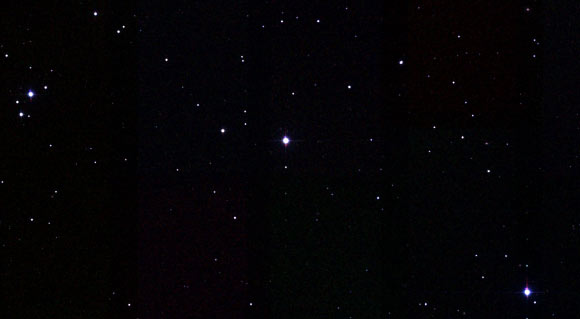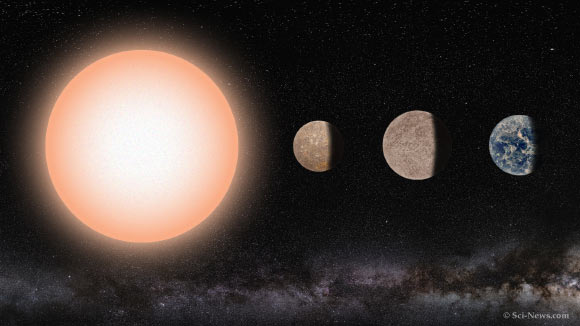Trio of Super-Earths Found Orbiting Red Dwarf Gliese 1061 | Astronomy – Sci-News.com
Astronomers from the Red Dots Collaboration have detected three rocky exoplanets orbiting Gliese 1061, which is the 20th nearest star to the Sun. The outermost planet, Gliese 1061d, lies within the classic liquid water habitable zone.
The Red Dots astronomers seek to discover rocky planets orbiting our nearest stellar neighbors.
The project’s 2018 campaign targeted Gliese 1061, an M-type (red dwarf) star with a mass of only 0.12 times the mass of the Sun.
Also known as GJ 1061, LHS 1565 and LTT 1702, this star is at a distance of approximately 12 light-years from Earth. It is approximately 7 billion years old and is relatively inactive.
“GJ 1061 has very similar properties to Proxima Centauri but activity indices point to lower levels of stellar activity,” said Georg-August-Universität’s Professor Stefan Dreizler and colleagues.
The astronomers found the new planets using a technique called the radial velocity method, which searches for wobbles in the movement of the parent star.
They used observations from the High Accuracy Radial velocity Planet Searcher (HARPS) spectrograph at the La Silla Observatory in Chile.

This image shows the red dwarf star Gliese 1061 (center). Image credit: Centre de Données astronomiques de Strasbourg / SIMBAD / SDSS.
“We report the detection of three planet candidates — Gliese 1061b, c and d — with periods of 3.2, 6.7 and 13 days, which is close to 1:2:4 period commensurability,” they said.
“The minimum masses of the three planets range from 1.4 to 1.8 Earth masses.”
With an orbital period of around 13 days, Gliese 1061d is the most interesting regarding potential habitability.
“Gliese 1061d, with a mass of around 1.7 times that of Earth, receives a similar amount of energy as Earth receives from the Sun,” the researchers said.
“Consequently it lies within the liquid-water habitable zone of the star and has a similar equilibrium temperature to Earth.”
A paper detailing the discovery will be published in the Monthly Notices of the Royal Astronomical Society.
_____
S. Dreizler et al. 2019. Red Dots: A temperate 1.5 Earth-mass planet in a compact multi-terrestrial planet system around GJ 1061. MNRAS, in press; arXiv: 1908.04717






